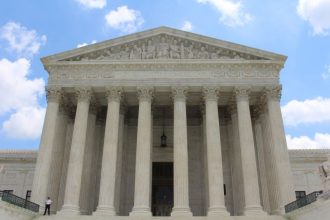June 30, 2020
Generic + Generic = Protectable Trademark
In Booking.com, the Supreme Court elevated the combination of two undisputed generic terms to protectable trademark status. Neither party disputed that the terms “booking” and “.com” alone were generic. The issue was whether the combination of generic terms could create a trademark. The USPTO said no, the EDVA disagreed and the 4th Circuit affirmed.
To understand this decision, it is important to recognize the legal framework for proving generic goods. Specifically, a term is generic if consumers would recognize the term to describe a class of goods. This requires evidence that the relevant public would understand the term to describe a type of goods — think “escalator,” for example.
The majority characterized the issue as a problem with a “sweeping rule” that generic term + .com is always unprotectable. Instead, the Supreme Court determined that the combination can be protectable if there is evidence that the combination results in consumers recognizing a meaning or source identification. This is a factual inquiry requiring evidence of “whether consumers in fact perceive that term as the name of a class or, instead, as a term capable of distinguishing among members of the class.”
In fact, the majority notes that if consumers make an exclusive connection between the mark and the source, that’s the whole point of trademark law!
A few other notable observations:
- It’s interesting that the USPTO chose to appeal this case especially since the Trademark Manual of Examining Procedure (TMEP) indicates that domain name marks can be registerable if there is evidence that it serves as a trademark. See TMEP 1215.02(a) (“ A mark composed of a domain name is registrable as a trademark or service mark only if it functions as a source identifier”). Moreover, the TMEP further conflicts with the USPTO’s position in booking.com by providing that “there is no per se rule that the addition of a non-source-identifying gTLD to an otherwise generic term can never under any circumstances operate to create a registrable mark.” TMEP 1215.05 (emphasis added).
- It’s also noteworthy that the Supreme Court mentions several different findings that the USPTO did not contest, including the type of evidence presented regarding consumers’ perception of the mark (e.g., survey evidence). See Slip op at 11 n. 6. As such, the majority ruled that, despite Justice Breyer’s concerns in the dissent, the Supreme Court did not have the ability to discuss these issues. It’s unclear whether those issues would have changed the outcome, but, it’s a reminder that you need to carefully preserve your arguments and/or consider which arguments to concede.
- Booking.com wisely appealed to the EDVA under Section 1071(a). They did so in order to present new evidence that was not before the USPTO. This evidence was persuasive to the Supreme Court. If Booking.com had sought review by the Federal Circuit, they could only argue the evidence of record that was before the USPTO.
- The USPTO sought its attorneys fees based on the cost shifting provisions of Section 1071. The 4th Circuit declined to award fees based on its precedent in Shammas. In a turn of good fortune for Booking.com, the Supreme Court determined in Nankwest that meaning that attorneys fees are excluded from the definition of “costs” under the Patent Act’s Section 145. Had this issue been in front of the Supreme Court, it’s likely that the same outcome would apply — i.e., USPTO’s attorney’s fees are not covered by Section 1071.
- Patent prosecutors are probably unsurprised by this decision as it seems that the Supreme Court adopted patent law principles: the combination of two known elements, in certain circumstances, can result in a patentable invention.





































